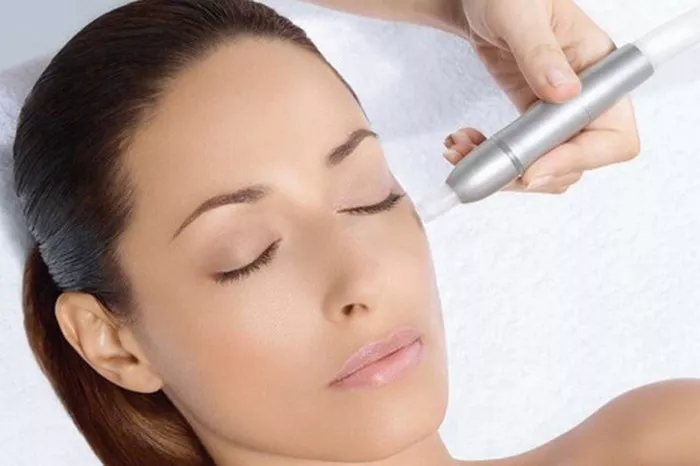Microdermabrasion is a non-invasive cosmetic procedure that has become increasingly popular in recent years. It involves using a special device to remove the outermost layer of dead skin cells from the face, revealing smoother, brighter skin underneath. However, it is important to know how often you can do microdermabrasion to avoid damaging your skin. In this article, we will explore the benefits of microdermabrasion, the recommended frequency of treatments, and some tips for maintaining healthy skin after the procedure.
What is Microdermabrasion?
Microdermabrasion is a cosmetic procedure that uses a special device to exfoliate the outermost layer of dead skin cells from the face. The device works by spraying tiny crystals onto the skin, which are then suctioned back up along with the dead skin cells. The procedure is painless and can be done in a short amount of time, making it a popular choice for people who want to improve the appearance of their skin without undergoing invasive procedures.
Benefits of Microdermabrasion
Microdermabrasion has several benefits for the skin. Some of the most common benefits include:
- Improved skin texture:
Microdermabrasion can help to smooth out rough skin texture, making the skin feel softer and smoother.
- Reduced appearance of fine lines and wrinkles:
By removing dead skin cells, microdermabrasion can help to reduce the appearance of fine lines and wrinkles.
- Reduced appearance of acne scars:
Microdermabrasion can help to improve the appearance of acne scars by removing the outermost layer of skin and stimulating collagen production.
- Improved skin tone:
Microdermabrasion can help to even out skin tone by removing dark spots and hyperpigmentation.
How Often Can You Do Microdermabrasion?
The frequency of microdermabrasion treatments can vary depending on individual needs and skin conditions. Typically, the procedure can be done once every 4 to 6 weeks. This time frame allows the skin to recover and regenerate after the procedure.
If you have sensitive skin or a skin condition such as rosacea or eczema, it is recommended that you consult with a dermatologist before undergoing microdermabrasion. They can recommend the appropriate frequency of treatments for your specific skin type and condition.
It is important to note that while microdermabrasion is a safe and effective procedure, it is not recommended for everyone. People with certain skin conditions, such as active acne, should avoid microdermabrasion as it can worsen their condition. Similarly, people who have recently undergone a chemical peel or have used products containing retinoids should wait a few weeks before undergoing microdermabrasion.
In addition to frequency, the number of microdermabrasion treatments needed to achieve the desired results can also vary depending on individual skin conditions and goals. Most people will see results after just one treatment, but multiple treatments may be needed for more significant improvements. A qualified skincare professional can recommend the appropriate number of treatments for your specific needs.
It is also important to maintain a good skincare routine between microdermabrasion treatments to maximize the benefits of the procedure. This includes using a gentle cleanser, moisturizer, and sunscreen to protect the skin from further damage.
How to Prepare for Microdermabrasion
Before undergoing microdermabrasion, there are a few steps you can take to prepare your skin for the treatment:
- Consult with a skincare professional:
It’s important to talk to a licensed skincare professional to determine whether microdermabrasion is appropriate for your skin type and any concerns you may have.
- Avoid tanning:
Avoid exposure to the sun or tanning beds for at least two weeks prior to your microdermabrasion treatment. Tanned skin is more sensitive and may be more prone to complications such as scarring.
- Stop using certain skincare products:
Stop using any skincare products that contain retinol or alpha-hydroxy acids at least 24 hours before your treatment. These ingredients can make your skin more sensitive and may cause irritation during the treatment.
- Skip the makeup:
Arrive at your appointment with a clean face, free of any makeup or skincare products. This will allow the skincare professional to properly assess your skin and prepare it for the treatment.
Tips for Maintaining Healthy Skin after Microdermabrasion
To maintain healthy skin after microdermabrasion, it is important to follow a good skincare routine. Here are some tips for maintaining healthy skin after the procedure:
- Avoid sun exposure:
After microdermabrasion, your skin may be more sensitive to the sun. It is important to avoid sun exposure for at least a week after the procedure, and to wear sunscreen with an SPF of at least 30 if you must go outside.
- Moisturize:
After microdermabrasion, your skin may be dry and flaky. It is important to moisturize regularly to help your skin heal and prevent further irritation.
- Avoid harsh skincare products:
Avoid using harsh skincare products such as scrubs or acids for at least a week after microdermabrasion. These products can irritate your skin and cause further damage.
- Stay hydrated:
Drinking plenty of water can help to keep your skin hydrated and healthy, especially after a microdermabrasion treatment.
Conclusion
Microdermabrasion is a safe and effective way to improve the overall appearance of your skin. By removing dead skin cells and stimulating cell growth, microdermabrasion can help reduce the appearance of fine lines and wrinkles, acne scars, and age spots. However, it’s important to keep in mind that this treatment is not a one-time solution and requires multiple sessions for optimal results.
Overall, microdermabrasion can be a valuable addition to your skincare routine if done safely and appropriately. By working with a licensed professional and following proper aftercare guidelines, you can achieve smoother, healthier-looking skin over time.


